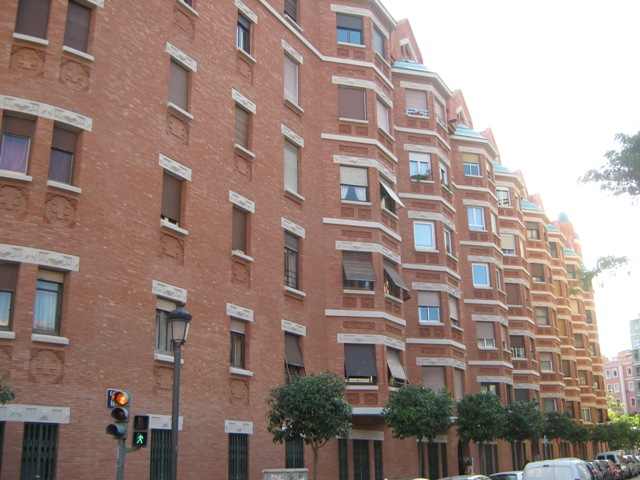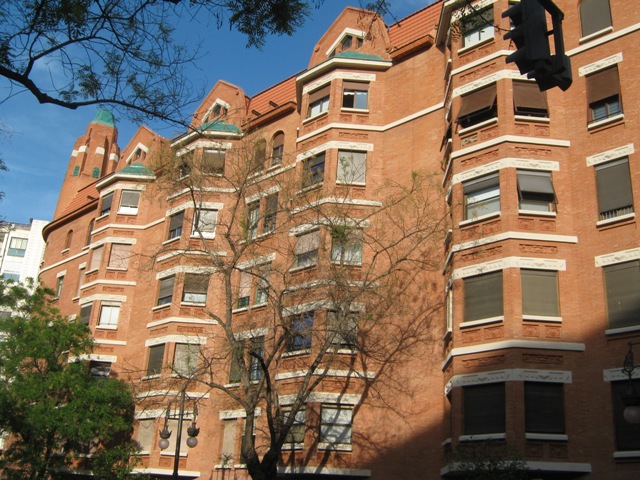I suppose it’s normal that in the heady days of the Second Republic they should have named a new block of flats The Red Building (La Finca Roja), although I suspect it was more for the colour of the bricks than to provoke Franco into invading the mainland with his Moorish mercenaries and his short statured friends Hitler and Mussolini.
In 2014 La Finca Roja celebrated 80 years as a Valencian landmark and still today it is a building that makes you stop and look without really knowing why.
Some refer to it as the eight-towered castle, hovering menacingly over Calles Albacete, Jesús, Marvá and Maluquer near Avenida El Cid, and even today it attracts architectural tourists from all over the world, such as those who take up the offer of guided tours organised by the Valencia branch of Guiding Architects: http://www.ga-valencia.es/ organised by German-born Valencian architect Boris Strzelcyzk.
The 378 dwellings were originally entended to provide accomodation for working class tenants in a kind of workers’ paradise, and the architect Enrique Viedma was influenced by 1930s Marxist architects from Vienna and Amsterdam among others.
Viedma was responsible for other emblematic buildings in Valencia, such as the Central Market, Marqués de Sotelo nº 10 and La Unión y el Fénix (Calles Xàtiva and Marqués de Sotelo), as well as the famous Journalists’ Houses, the mini mansions at the end of Avenida Blasco Ibañez, next to the Viveros Park.
When he was on the crest of his career and about to build a cinema studio complex in Germany, the Civil War broke out and he spent some time in prison, like so many who were living in the wrong place at the wrong time.
One of the 378 tenants, Joël Mestre once organised an exhibition about the building called ‘Encapusulados’, which has been seen in Tokyo, New York, Berlín and even Hanoi. Another, Guillermo Escalona is a successful film director who divides his time between LA and the Finca Roja.
The building was designed with neighbourliness in mind, with a large internal garden inside where the tenants could share their leisure time and discuss architecture.
Inevitably Mussolini dedicated some of his aerial bombardments to the building, when he wasn’t blasting away at the railway station and shipyards of Republican Valencia. Fortunately he failed in that as he failed in so many other things.




